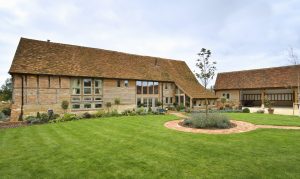
Increases in the rate of Stamp Duty Land Tax (SDLT) over the past few years have created a number of anomalies in the legislation which, if applicable to your circumstances, can substantially reduce the amount of SDLT payable on the purchase of a property. One such anomaly is the effect of Multiple Dwellings Relief (MDR).
Multiple Dwellings Relief
The purpose of this relief is to simplify the calculation of SDLT when a single transaction includes the purchase of more than one dwelling. Rather than separately calculating the SDLT on each unit acquired, a simple averaging is applied and SDLT calculated on the average unit price arrived at by dividing the total transaction price by the number of individual dwelling units.
MDR Claims
When SDLT rates were low, an MDR claim usually made little difference to the overall SDLT payable and was a sensible and pragmatic simplification for purchase of multiple dwellings. This is still the case where dwellings purchased in a single transaction are of similar value. But with the current much higher rates of SDLT for more expensive properties, where a purchase consists of an expensive dwelling and a much cheaper dwelling, then by averaging the unit price, this can create a substantially lower overall SDLT charge.
This effect can be particularly significant when buying a property which may have a separate annexe such as a granny annexe. For example, the standard rate of SDLT due on a property purchased for £1.2million would be £63,750. If the same property has a self-contained annexe which qualifies as a separate dwelling and an MDR claim is made, then the combined SDLT charge falls to £40,000. This is because the SDLT would be calculated based on two properties valued at £600,000 each. Such properties are often under a single title and the fact that there could be more than one dwelling within the property can sometimes be missed. Contrast this with the SDLT on two separate purchases of properties with values at say £900,000 and £300,000 (i.e. the same overall total of £1.2 million) and there is a different combined SDLT charge again of £42,250.
Can I recover overpaid SDLT?
If you have purchased a property within the last twelve months which contained a separate dwelling, but you paid SDLT on the full purchase price, then you may still be able to submit an amended SDLT Return to make an MDR claim and recover the overpaid SDLT.
We are seeing an increasing number of firms trawling through the Land Registry records for property purchases of the types of property that are frequently converted into multiple dwellings. These might typically be large terraced town houses which are often split into separate flats. Those firms are then mailing the purchasers recommending that they make MDR claims on a no-win-no-fee basis.
If you receive such a letter, I would recommend caution as there are many reasons why an MDR claim may not be applicable and may have costly repercussions for you further down the line.
Distinct Separate Dwelling
For a claim to be successful, the transaction must involve more than one distinct separate dwelling. HMRC accept that a single building can contain more than one dwelling but state their view as follows:
“A self-contained part of a building will be a separate dwelling if the residents of that part can live independently of the residents of the rest of the building including independent access and domestic facilities”.
This will require an annexe say to have its own separate entrance and separate kitchen and bathroom facilities.
Converting the number of dwellings
Another trap for the unwary is that if a multiple dwellings relief claim is made on a transaction and there is subsequently a change in the number of dwellings subject to the claim within a period of three years from the transaction, then there will be a claw-back of MDR claimed. If, say, a property was purchased that was separated into more than one flat with the intention of converting it back to a single property, then any Multiple Dwelling Relief claimed will have to be repaid.
HMRC Enquiries into MDR claims
Finally, it should be noted that a Stamp Duty Land Tax Return is a Self-Assessment Tax Return and as such any claim is likely to be processed without a detailed initial review, but HMRC have the power to enquire into such Returns and accordingly an apparently successful claim may be challenged and fail once it has come under proper scrutiny. This might be an issue if you have already paid out on no win fee basis.
The information in this article was correct at the date it was first published.
However it is of a generic nature and cannot constitute advice. Specific advice should be sought before any action taken.
If you would like to discuss how this applies to you, we would be delighted to talk to you. Please make contact with the author on the details shown below.









Thanks for this very clear and well-written explanation Richard. Would you predict any interaction with Council Tax, in a case where there is an independent annex which is not being assessed separately at the time of purchase? ie, would an MDR claim trigger a Valuation enquiry do you think?
Would you be able to comment on the impact making a claim for a SDLT refund might have on capital gains tax on final sale of the property. Or if this is dependant upon the actual use of the independent annex ie just as extra family space or alternately for example as an occasional holiday let?
I have been asked to comment on the consequences of claiming multiple dwellings relief and receiving a refund of SDLT in the context of future capital gains on the sale of the property concerned.
There are two issues which spring to mind. The first is the effect on the acquisition cost of the property for the purposes of calculating the subsequent gain on disposal. SDLT is an incidental cost of purchase and accordingly can be offset against the capital gain. A refund of SDLT will reduce the allowable costs. The second will be dependent on what the dwelling (or should I say dwellings as there will be more than one of them) will be used for. If a single property consisting of a single dwelling is purchased solely for use as the main residence of the purchaser then the principle private residence (PPR) exemption will in most circumstances apply to exempt the property from CGT on a subsequent sale. Whilst it is possible that PPR can cover a property consisting of more than one dwelling, if one of the dwellings was say let commercially then an element of a subsequent sale would not be covered by the exemption.
Hi Richard
WIl I be able get SDLT multiple dwellings relief if I purchase 6 self contained flats, let on ASTs, in a building which is on a 999 year lease as opposed to a freehold. I can’t find any reference to this on the HMRC website.
Good morning, would you be able to comment on what appears to be a very grey area.
Is multiple dwelling relief calculated using the standard or higher sdlt rates.
Senario
Purchasing a single title with 7 seperate dwellings one of which will be the main residence.
If a second dwelling within the single transaction is claimed for refund under MDR, but is then used as a business premises (by the home owners, not leased out or let) within 2 years of purchase, would HMRC be entitled to claim the refund back?
The recent decision in HMRC’s favour in the first tier tribunal case of John Mason v HMRC highlights several issues which will need to be considered when making a claim for SDLT multiple dwellings relief.
Perhaps most importantly it is the condition of the property at the date of the transaction which is relevant. A property needs to be suitable for use as a dwelling at the time of the transaction. Any claim made on the basis that a property could be easily be made suitable to use as a dwelling is likely to fail.
HMRC are looking at the purchased property as a whole and if an annex appears to be an integrated part of the main dwelling they will look at it closely to make sure the annex does stand on its own as an independent liveable space.
To be an independent dwelling the property needs to have its own access and the courts consider that means the access needs to have a degree of separation from the main dwelling. In this particular case, it appears that whilst the annex had its own door, to access the annex it was necessary to go through the garden of the main dwelling which was thought insufficiently independent. I can think of a number of objections to this final point as very many of us have to share driveways or internal hallways and staircases with strangers in order to get to our properties. But it seems that the thought of someone trapping across their manicured lawns was too much for the tribunal judges!
At the moment we appear to be in an unsatisfactory situation where a very small difference in the layout of a property can make a very large difference to the amount of Stamp Duty Land tax payable.
This was very helpful. After purchasing a property for £975k that was being used as two separate dwellings, I was approached by a company who offered to claim a refund of SDLT using the MDR. They wanted a 20% commission + VAT for their service which would have amounted to over £6k. Only by reading your article did I find that the relief would be repayable if, as intended, the property is converted back to one dwelling. I can just imagine the difficulty involved in recovering their fee had I allowed them to put in a claim on my behalf.
Thank you for your comment. I am always pleased to hear I have been able to help. Please feel free to share this with anyone you think might also find it helpful.
Further to the Chancellor’s announcements in the budget, MDR will no longer apply after 1 June 2024